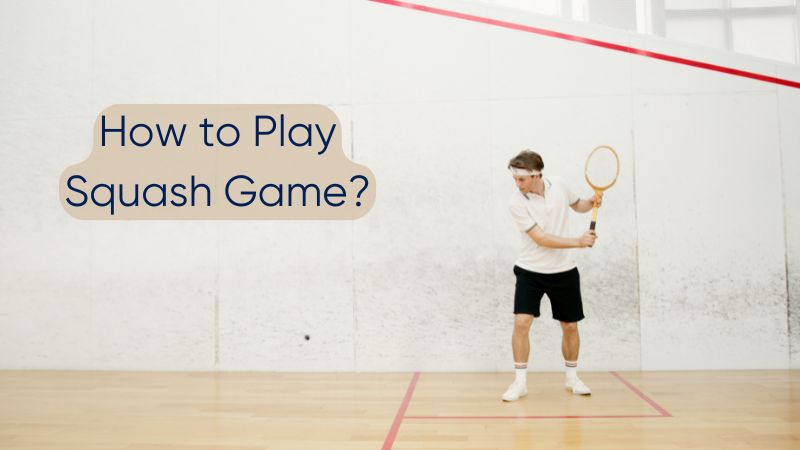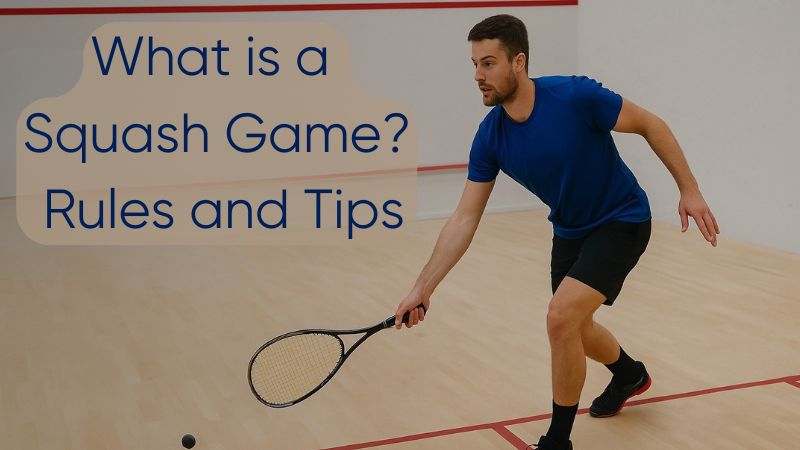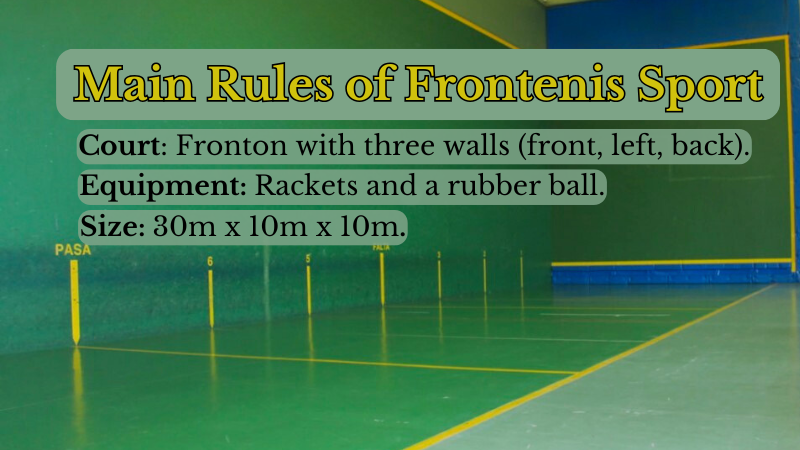Squash is an exciting, fast-paced sport played on a four-walled court. It requires quick reflexes, sharp shots, and endurance.
While similar to tennis, squash has its twist – instead of a net, players hit the ball against a front wall.
In this article, we explore the rules of squash, useful tips for improving your game, and different variations you can try.
Squash Rules and Gameplay
Below, we look at the squash game rules and gameplay.
How to Play Squash Game?
Players play squash on a closed court with two players (singles) or four players (doubles). The goal is to hit the ball against the front wall in a way that makes it hard for your opponent to return.
The ball can bounce off the side and back walls before hitting the front wall, but it can’t bounce twice on the floor.

The game needs fast footwork, quick movements, and good positioning. Players must stay alert and control the speed and placement of their shots.
Squash rallies are fast, and players cover a lot of ground quickly. Since the court is small, it’s important to place your shots carefully to make it harder for your opponent to return the ball.
Basic Rules of Squash
Now, we share the basic rules of squash, including the serving rules, gameplay, and scoring system.
Serving
The game starts with a serve. The server hits the ball against the front wall, making sure it lands above the service line.
After hitting the front wall, the ball must land on the opposite side of the court. The server stands in the service box and serves diagonally. The receiver must hit the ball before it bounces twice.
If the server makes a mistake, like serving outside the box or missing the front wall, the opponent gets a point. Players switch sides after each point.
Ball in Play
After the serve, players take turns hitting the ball. The ball can hit the side and back walls but must hit the front wall before bouncing twice.
Scoring System
Matches are played in a best-of-five format. Each game goes to 11 points. If the score is 10-10, a player must win by 2 points.
Winning a Rally
You win a rally if the opponent doesn’t return the ball, it goes out, or they make a mistake. Good positioning and forcing errors help you win.
Let and Stroke Calls
If players get in each other’s way, the point may be replayed, or the affected player may win the point. These rules keep the game fair.
Equipment Used in Squash
Racket
Squash rackets are light and easy to control. They’re usually about 27 inches long and 8.5 inches wide. Most rackets weigh between 90 and 150 grams. The strings are tightened to give a good balance of power and control.
Ball
Squash balls are small, made of rubber, and weigh around 23-25 grams. They come in different types, depending on your skill level:
| Ball Type | Bounce Speed | Player Level | Details |
|---|---|---|---|
| Double Yellow Dot | Very Slow |
Professional | |
| Yellow Dot | Slow |
Advanced | |
| Green Dot | Medium |
Intermediate | |
| Red Dot | Medium |
Beginners/Junior | |
| Blue Dot | Fast |
Beginners |
Ball Details
Double Yellow Dot
The official competition ball used in professional tournaments. Very slow bounce speed makes for a challenging, controlled game at the highest level. These balls require significant skill to properly warm up and play with.
Recommended for: Professional players and elite tournaments
Yellow Dot
Slightly more bounce than the double yellow, designed for advanced club-level players. These balls provide a good balance of speed and control for skilled players.
Recommended for: Advanced competitive players and club tournaments
Green Dot
Medium bounce speed makes this ball ideal for intermediate players developing their skills. Offers more forgiveness while still providing a legitimate playing experience.
Recommended for: Intermediate players and recreational club matches
Red Dot
Medium bounce designed specifically for beginners and junior players. Allows for longer rallies and skill development without requiring advanced technique.
Recommended for: Beginners, juniors, and training sessions
Blue Dot
Fast bounce speed makes this ball the most forgiving and easiest to play with. Perfect for complete beginners to learn the fundamentals of the game.
Recommended for: Complete beginners and introduction to the sport
Shoes
You need non-marking shoes to play squash. These shoes provide good grip, prevent slipping, and support quick movements.
Protective Eyewear
It’s a good idea to wear goggles, especially for younger players or doubles games. Goggles help protect your eyes from the fast-moving ball.
Court
A squash court has four walls: front, back, and two sides. The court is marked with lines, including service boxes in the back corners. The standard size is 9.75 meters long, 6.4 meters wide, and 5.64 meters high.
For doubles, the court is bigger, measuring 25 feet wide and 45 feet long, with a ceiling at least 24 feet high.
5 Squash Game Benefits
| Benefit | Description |
|---|---|
| Improves Heart Health | Squash gets your heart pumping and helps keep you fit. |
| Builds Strength | The game works your legs, arms, and core, making you stronger. |
| Improves Mental Focus | Squash makes you think fast, helping you improve focus and quick thinking. |
| Burns Calories | It’s a great way to burn calories and stay in shape. |
| Reduces Stress | Playing squash helps you relax and feel better by reducing stress. |
Squash Game Tips
Focus on Footwork
Keep your feet light and ready to move quickly in any direction. The faster you move, the better you can react to the ball and stay in control of the game.
Control the T
Stay near the T (the center of the court) so you can reach any shot quickly. This gives you the advantage to control the pace of the game.
Master the Serve
Use your serve to set the tone for the point. Aim for the back corners to make your opponent move and make it harder for them to return the ball.
Vary Your Shots
Mix up your shots to keep your opponent guessing. Use lobs, drops, and drives at different times to keep them off balance.
Stay Mentally Sharp
Squash is as much a mental game as it is physical. Stay focused, think ahead, and predict your opponent’s moves to stay one step ahead.
Keep Your Racket Ready
Always keep your racket up and in position to hit. This helps you react faster and make more precise shots.
Be Patient
Don’t rush your shots. Wait for the right moment to make your move and take control of the rally. Patience will improve your chances of winning the point.
Squash vs Tennis
| Feature | Squash | Tennis |
|---|---|---|
| Court | Small, enclosed | Large, open with a net |
| Ball | Small, less bouncy | Larger, bouncier |
| Gameplay | Hit against the front wall, bounce off sides | Hit over a net |
| Speed | Fast-paced, quick reactions | Longer rallies, more time between shots |
| Scoring | Point-based, usually to 11 or 15 | Games and sets |
Squash Game Varieties
In singles squash, two players compete against each other on a small court. Each player has their own half of the court, and the goal is to hit the ball in a way that makes it hard for the other player to return. This version of the game requires fast movements and quick reactions.
Doubles squash is played by two teams, each with two players. The court is the same size, but with four players, it requires better teamwork and communication to cover the space. Doubles squash is more social but still fast and competitive.
Racketball is a version of squash that uses a larger, bouncier ball. This makes the game slower, giving players more time to react. It’s a great option for beginners because the rallies tend to last longer, making it easier to get into the game.
Hardball squash is a faster version played in North America. It uses a quicker, bouncier ball and a smaller racket. This makes the game faster and more intense, requiring quick reactions and high-speed play.
Softball squash is the standard version of squash played internationally. It uses a smaller ball that doesn’t bounce as much, so players need better control and precision. This version is more challenging because players need to rely on skill and strategy instead of power.
What is a Squash Game: Conclusion
Squash is a fun way to get a full-body workout, improving your strength, speed, and agility while burning calories. It’s fast-paced and makes you think, keeping both your body and mind active.
Whether you want to stay fit, reduce stress, or challenge yourself, squash offers it all. It’s easy to play at any level and can be enjoyed with friends or in a competitive setting. Squash helps you stay active, motivated, and always improving.
FAQs About Squash Game
Squash is a fast-paced sport played in a small court where players hit a ball against a front wall, trying to make it difficult for the opponent to return.
Squash can be played with two players (singles) or four players (doubles).
You need a squash racket, a ball, non-marking shoes, and optional protective eyewear.
Squash is typically played to 11 points. If the score reaches 10-10, a player must win by 2 points.
Yes, squash is an excellent workout that improves strength, speed, and endurance while burning calories.





